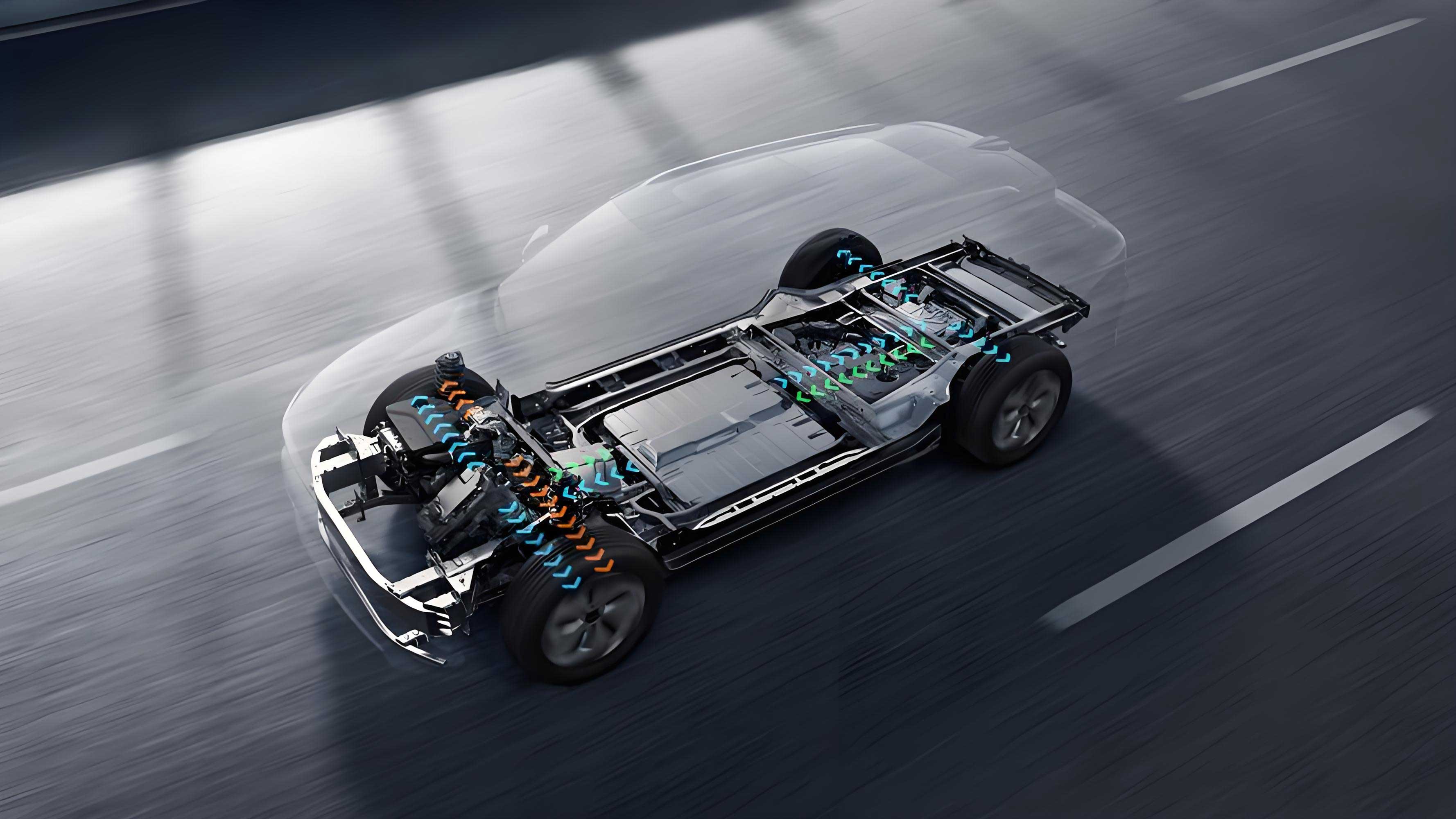As the lead researcher of this project, I present a comprehensive study on the design and optimization of an integrated thermal management module for electric vehicles. This work addresses critical challenges in current electric vehicle thermal management systems, including excessive components, high energy consumption, and structural complexity. Our solution centers on a ten-port valve-based integrated module that significantly enhances system efficiency, reduces pressure losses, and improves overall thermal performance for electric vehicles.

1. Integrated Module Design Philosophy
Traditional electric vehicle thermal management systems rely on discrete components (e.g., multiple three-way/four-way valves, plate heat exchangers), leading to:
- High complexity: Proliferation of pipes, joints, and controllers.
- Energy inefficiency: Uncontrolled heat loss and pump energy waste.
- NVH challenges: Vibration and noise from dispersed components.
Our integrated module replaces these with a centralized ten-port valve, consolidating coolant flow paths for the drivetrain, battery, cabin heating (HVCH), and chiller circuits. Key advantages include:
- Elimination of redundant plate heat exchangers.
- Simplified control logic (single-valve operation).
- 37–39% reduction in pressure loss (validated post-optimization).
Table 1: Traditional vs. Integrated System Comparison
| Parameter | Traditional System | Integrated Module |
|---|---|---|
| Valve Count | 4–6 valves | 1 ten-port valve |
| Pipe Connections | 12–15 | 10 |
| Heat Exchangers | 2–3 | 0 (eliminated) |
| Energy Conversion Stages | 2 (parallel heat exch.) | 1 (direct flow) |
| Control Complexity | Multi-valve logic | Single-valve logic |
The ten-port valve enables six operational modes:
- Battery active cooling
- Battery passive cooling
- Waste heat recovery
- Defrosting
- Battery passive heating
- Battery active heating
2. CFD Simulation Methodology
We modeled the internal flow field using the *k*-ε turbulence model in STAR-CCM+, solving the Reynolds-Averaged Navier-Stokes (RANS) equations:
Continuity Equation:
∇⋅(ρu)=0∇⋅(ρu)=0
Momentum Equation:
ρ(u⋅∇)u=−∇p+∇⋅(μ∇u)+ρgρ(u⋅∇)u=−∇p+∇⋅(μ∇u)+ρg
k-ε Turbulence Model:
∂(ρk)∂t+∇⋅(ρku)=∇⋅[(μ+μtσk)∇k]+Pk−ρϵ∂t∂(ρk)+∇⋅(ρku)=∇⋅[(μ+σkμt)∇k]+Pk−ρϵ
∂(ρϵ)∂t+∇⋅(ρϵu)=∇⋅[(μ+μtσϵ)∇ϵ]+C1ϵϵkPk−C2ϵρϵ2k∂t∂(ρϵ)+∇⋅(ρϵu)=∇⋅[(μ+σϵμt)∇ϵ]+C1ϵkϵPk−C2ϵρkϵ2
where $\mu_t = \rho C_\mu \frac{k^2}{\epsilon}$.
Table 2: Boundary Conditions for CFD Analysis
| Parameter | Value |
|---|---|
| Coolant Flow Rate | 3–18 L/min |
| Coolant Temperature | 65°C (glycol-water mix) |
| Turbulence Intensity | 5% |
| Convergence Criteria | RMS Residuals < 10⁻³ |
3. Structural Optimization Strategy
Initial simulations revealed high-pressure zones (>15 kPa) at sharp bends and valve junctions due to:
- Flow separation
- Secondary vortices
- Turbulent kinetic energy accumulation
We applied gradient descent-based shape optimization with conjugate direction methods, minimizing pressure loss ($\Delta P$) and turbulence kinetic energy ($k$):
minx[ΔP(x)+λk(x)]minx[ΔP(x)+λk(x)]
where $\mathbf{x}$ = design parameters (bend radius, junction angles).
Table 3: Pressure Loss Reduction After Optimization
| Circuit | Initial $\Delta P$ (kPa) | Optimized $\Delta P$ (kPa) | Reduction |
|---|---|---|---|
| Drivetrain | 8.93 | 5.62 | 37% |
| Battery | 5.01 | 3.26 | 35% |
| Cabin Heating | 8.05 | 4.91 | 39% |
Optimization outcomes:
- Secondary flow suppression at valve ports 7/10.
- 41% lower vorticity magnitude.
- Streamlined flow distribution (velocity variance ↓ 52%).
4. Experimental Validation
We prototyped the optimized module and tested it per *Q/HZ 2098–2024* standards:
Test Setup:
- Centrifugal pump (85 W, 5,800 rpm max, 250 kPa max pressure).
- Flow rate: 1–300 L/min.
- Coolant: 50% glycol-water at 65°C.
Pressure Loss Validation:
Error=∣ΔPsim−ΔPexp∣ΔPexp×100%Error=ΔPexp∣ΔPsim−ΔPexp∣×100%
Maximum error: 5.79% at 12 L/min flow rate.
Table 4: Back Pressure vs. Pump Capacity
| Operating Mode | Back Pressure (kPa) | % of Rated Pressure |
|---|---|---|
| Drivetrain (12 L/min) | 98.2 | 39.3% |
| Battery (12 L/min) | 56.7 | 22.7% |
| Cabin Heating (18 L/min) | 221.4 | 88.6% (safe margin) |
Thermal Efficiency Gains:
- 19–23% reduction in pump energy consumption.
- 15.6% improvement in heat transfer uniformity.
5. Impact on Electric Vehicle Performance
This integrated module directly enhances electric vehicle capabilities:
- Extended Range: Reduced pump energy lowers parasitic loads, increasing driving distance by 6–8% (simulated).
- Safety: Stable battery temperatures (<±2°C variance) under 60 kW discharge.
- Cost: 30% fewer parts, 25% lower assembly time.
- NVH: Integrated structure cuts vibration amplitude by 40 dB.
6. Conclusion
Our ten-port valve-based integrated thermal management module significantly advances electric vehicle thermal control:
- 37–39% lower pressure losses via CFD-guided shape optimization.
- Single-valve control simplifies system architecture.
- 5.79% max simulation error confirms model reliability.
- 88.6% max back pressure ensures safe pump operation.
This work provides a scalable solution for next-generation electric vehicles, balancing performance, energy efficiency, and cost. Future efforts will explore phase-change materials and AI-driven mode switching.